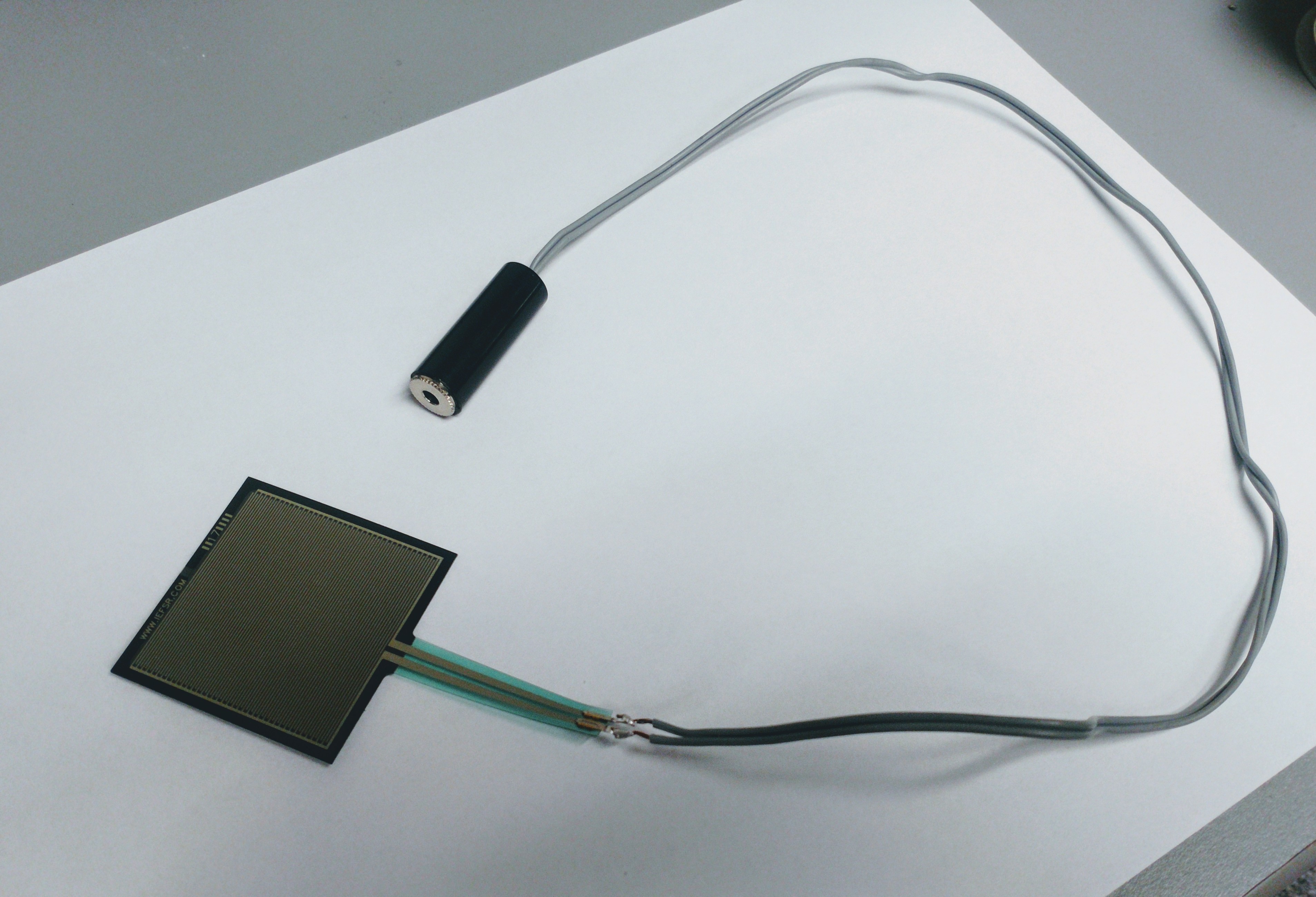-
Future Features to Consider
10/21/2017 at 08:33 • 0 commentsBluetooth integration to mobile app. App would log how often the user is performing pressure relief exercises. This could be in term used as a reminder system for those that are newly injured and in a wheelchair.
Wireless charging of the system for those that may not have the manual dexterity to plug in a charging cable. For those in power wheelchairs, the system could run on the wheelchair battery.
Shear sensors on top of the cushion. Apparently shear can influence the development of pressure sores.
-
Major updates
10/21/2017 at 08:00 • 0 commentsUpdated instructions and new sketch file for Arduino Uno. At this point, everything works in terms of a proof of concept. Future steps will be to go beyond the breadboard phase, though initial testing with wheelchair users will be adequate as is.
Fritzing diagram is not updated, but all that is added is two more FSR's connected to A1 and A2. Strangely, the fritzing program does not have the larger FSR's that I am using.
Excited to get real feedback once testing begins in the upcoming weeks. Looking forward to expanding the scope and incorporating moisture sensors to help users determine if they are wet due to a leaky catheter. (This was the first thing that was relayed to me after showing the prototype).
Some funkiness with updating the instructions on this project page. Steps sometimes get out of order.
-
RiseUp! System video
10/21/2017 at 00:26 • 1 comment -
Revisions forthcoming
10/18/2017 at 21:09 • 0 commentsMajor revisions to this project will be published by the end of the week. Implementation of larger FSR's and revised parts list and code. Results from interviews and preliminary testing.
![]()
-
Interviews
09/19/2017 at 16:30 • 0 commentsAwaiting the arrival of new, larger FSR's for the second prototype. Also continuing to interview several potential users of wheelchairs for their input into the design of the system. This is the most crucial aspect of this project.
-
step by step
09/01/2017 at 22:18 • 0 commentsSome future plans:
-Incorporate 3 FSR's (Larger ones). Currently one small one is placed in the rear portion of the chair. The plan is to place 2 more on the left and right area of the seat cushion. The picture in the gallery shows the position of where they will be placed.-Audible feedback with a speaker attached to the Arduino was ruled out. Most wheelchair users I consulted wanted the system to be as discreet as possible, and audible feedback would be distracting. LED's seemed to be a good compromise.
-Potentially incorporating bluetooth to interface with an app. The app would send out live data and reminders via push notifications. Would also keep a log of daily pressure relief exercises to monitor how well and how often they are doing them. This seemed to be an attractive feature many wheelchair users I spoke to wanted. Notifications would be as discreet as possible.
-
First Iteration: Proof of Concept
09/01/2017 at 22:10 • 0 commentsCurrent build is a proof of concept. One FSR is used.
This is the basic premise of how this system works now:
When the individual sits on the sensor, all 3 LED's are not lit. When the person shifts in the chair (not completely), one of the 3 LED's is not lit, corresponding to the force that is distributed on the sensor.
When the individual wants to perform a pressure relief, he or she lifts their bottom away from the seat cushion. When the person's bottom is completely off the FSR, all 3 LED's will be lit. This indicates that he or she is performing the pressure relief correctly.
-
Hello, World!
08/31/2017 at 17:16 • 0 commentsHello, World!
Thanks for visiting this project site. Pressure sores are a severe problem that many individuals who use wheelchairs deal with in some way or another. This is due to the the inability to move their bodies around wheelchair seat cushions. The pain receptors that would normally trigger someone to move their body around in a chair are not functional, and pressure continues to build up in isolated areas of the skin that are contacting the seat cushion.
Recently, I had a coworker who was unable to work for 18 months due to one single pressure sore that caused severe infection. He had to have several surgeries and needed to be hospitalized for most of this time. Unfortunately, more than half of those who use wheelchairs can expect to experience issues with at least one pressure sore in their lifetime.
The main way to prevent pressure sores is to perform pressure reliefs several times an hour.
The system I am developing is designed for wheelchair users as a convenient way to prompt and monitor their pressure relief exercises. Current wheelchair pressure sensing systems are targeted for physical therapists and other clinicians to use when fitting a proper cushion on wheelchair . These systems give feedback on how evenly pressure is distributed, and that certain pressure points will be alleviated. They are meant for use in a hospital or other clinical setting during the fitting phase. Several consumer oriented pressure sensor systems have appeared on the market over the years, but typically they are quite costly (4-8k) and may be too bulky for most wheelchair seating systems.
My system is designed to be simple, unobtrusive, and completely open source. For someone who is newly injured and just learning to use a wheelchair, this system will assist in training for pressure reliefs.
The main components of this device are readily available, and include an Arduino Uno, FSR sensors, and LED's. Current prototype has one sensor in the back and underneath the wheelchair cushion.
More info to come in the next few days. Thanks for dropping by!
RiseUp! System: Wheelchair Pressure Relief Monitor
System which allows individuals to gauge how well they are performing crucial pressure relief exercises in their wheelchairs.
